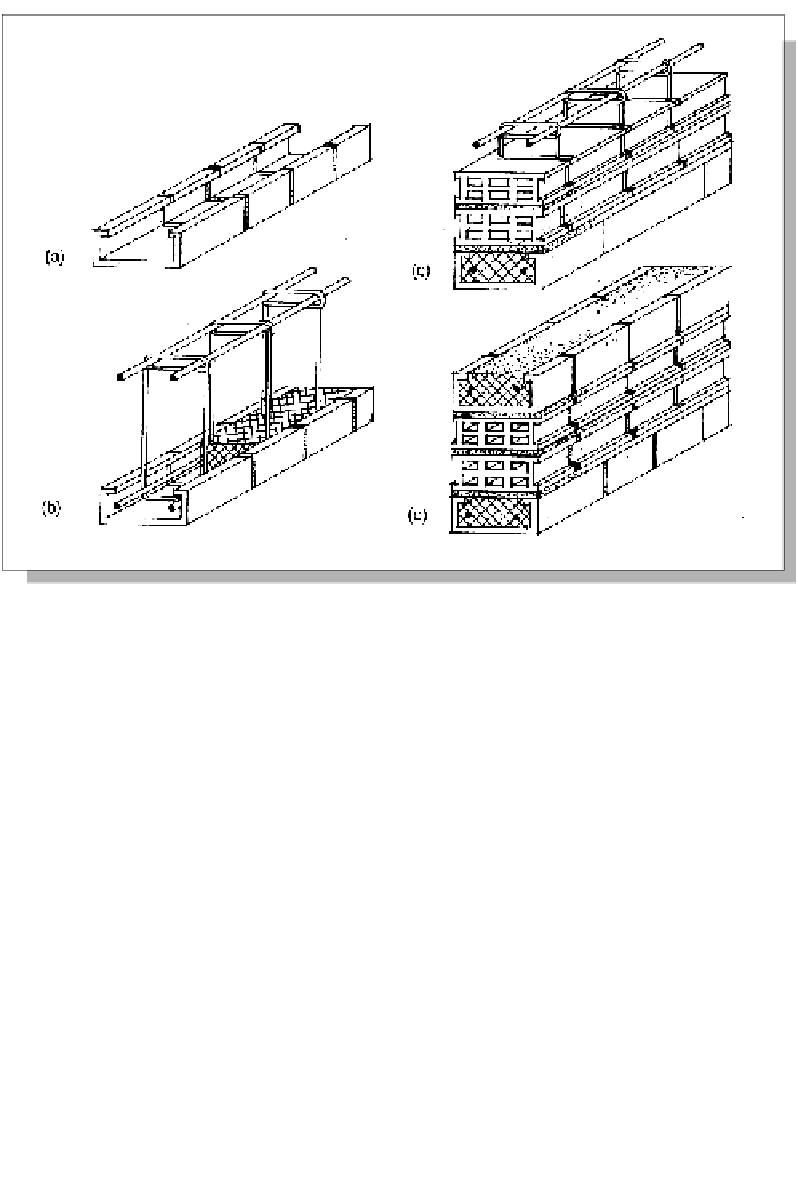Civil Engineering Reference
In-Depth Information
Figure 13.14: The process of steel reinforcement in hollow block beams.
Recycling
A brick can usually last many house generations. It needs to do this in order to
justify its high primary energy consumption and highly polluting effluent dur-
ing production.
To recycle brick, the mortar has to be weaker than the brick or the brick will
break up before the mortar. Since 1935 strong mortars containing a large propor-
tion of Portland cement have been used making walls from this period difficult
to recycle. Lime mortars with a maximum of 35 per cent Portland cement make
it possible to dismantle a wall. The necessary strength of brickwork is also
achieved by using hydraulic lime mortar. When lime mortar is used, there is no
need for expansion joints in the wall because of the high elasticity of the brick-
work. Lime cement mortars should be used in districts with an aggressive cli-
mate, such as in towns or along the coast.
There is no technically efficient method for cleaning old bricks - it has to be
done by hand and is relatively labour intensive. Recycled bricks are mainly
usable in smaller structures such as party walls and external walls, where there
is no heavy horizontal loading. In the pores of the brick, old mortar is chemi-
cally bound with the brick, making it more difficult to bind new mortar.

